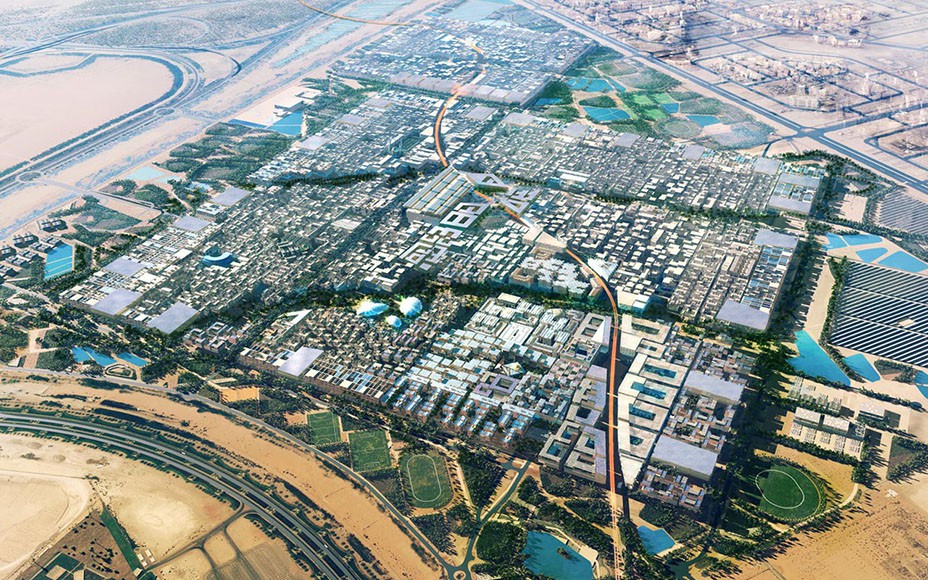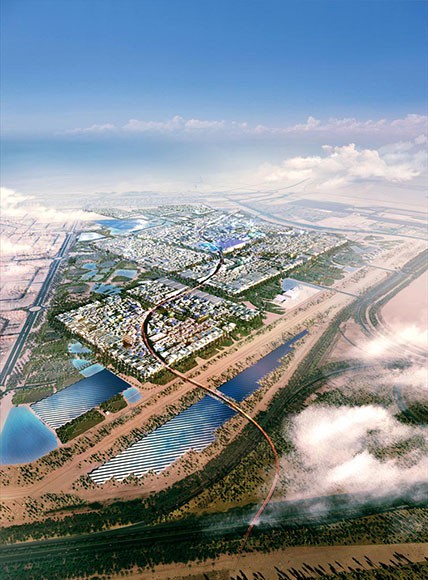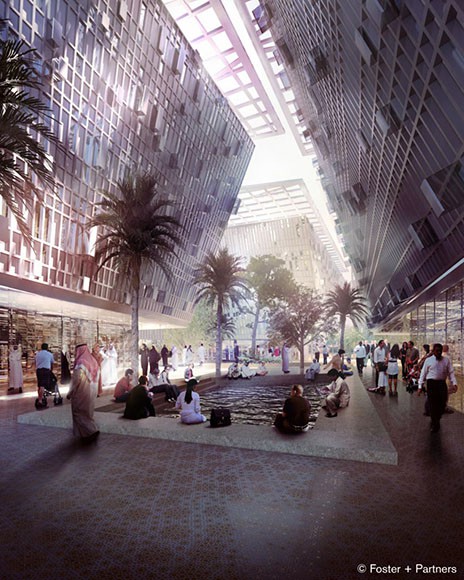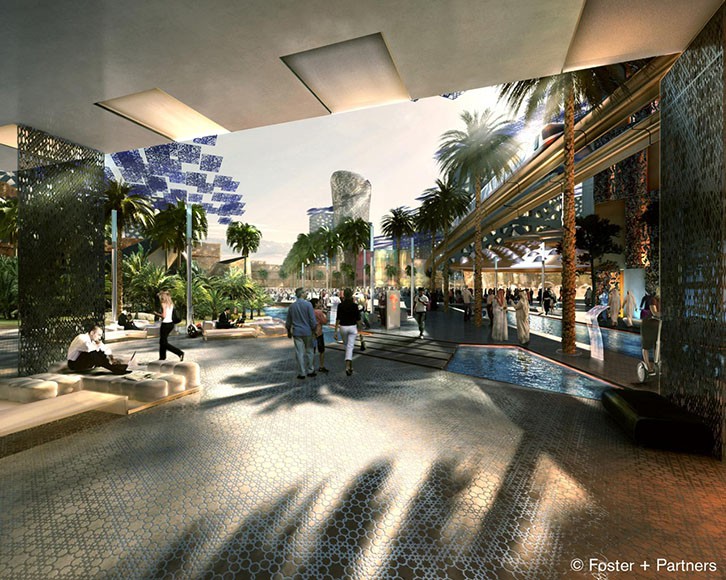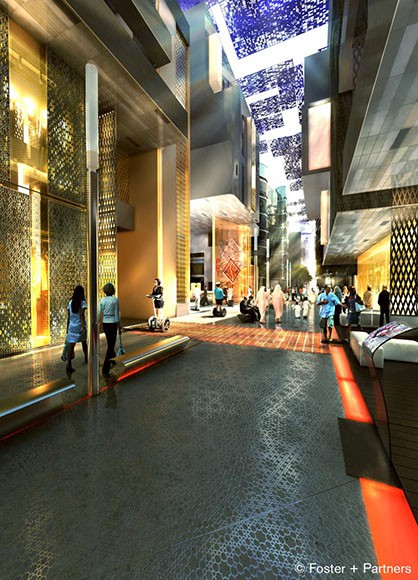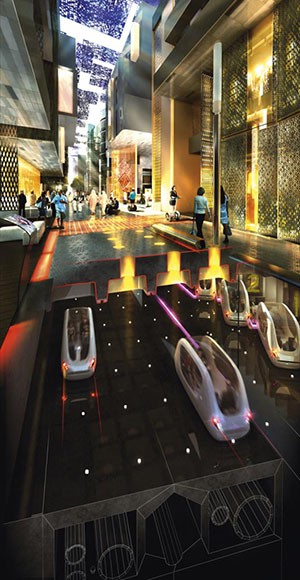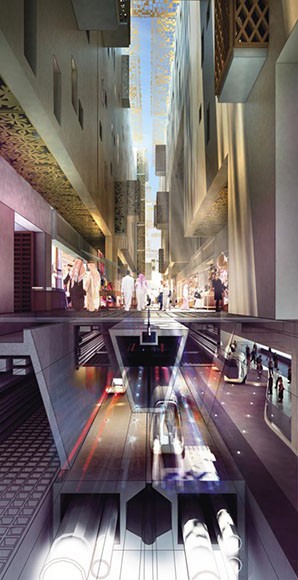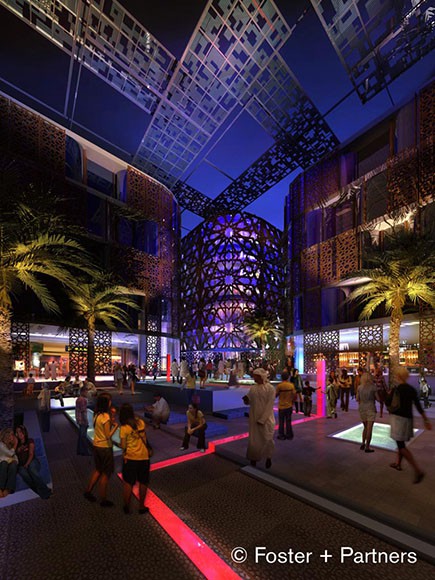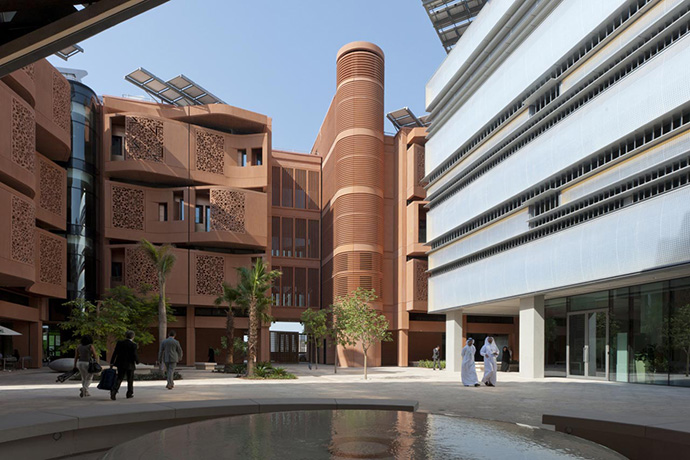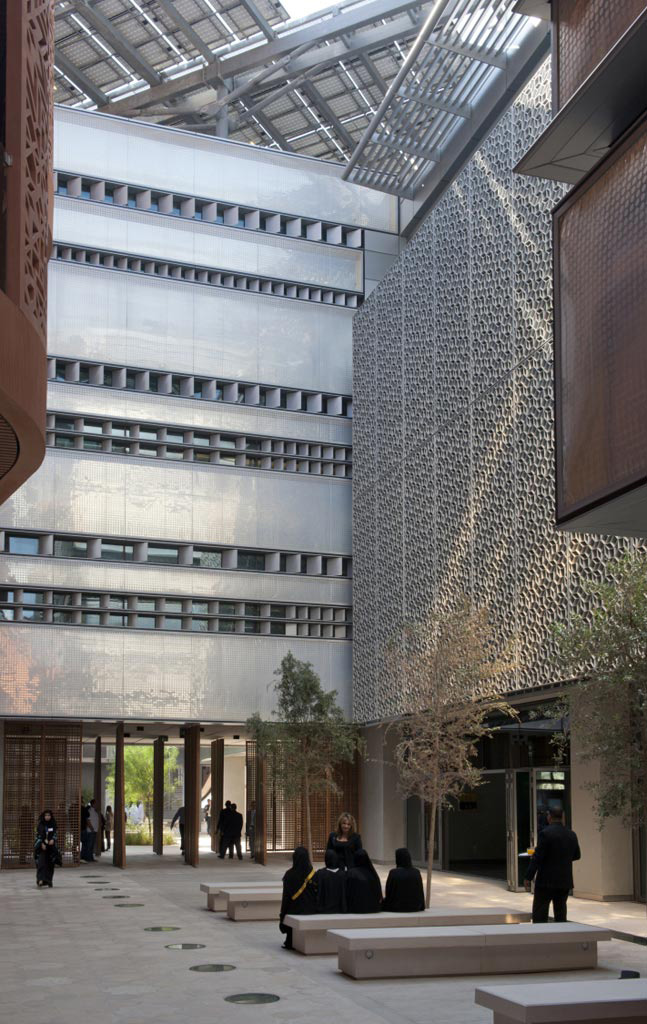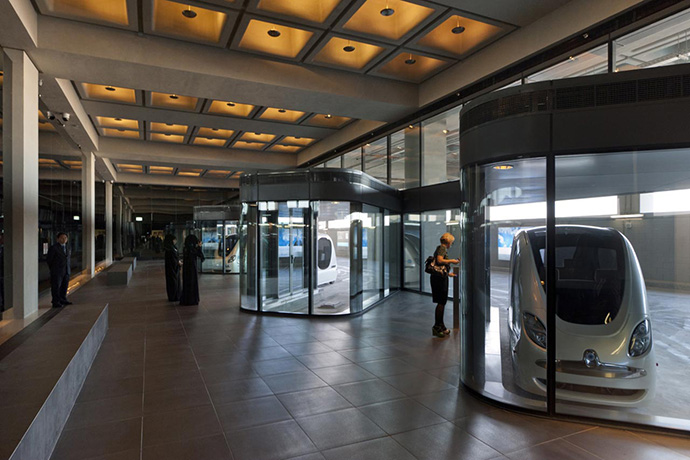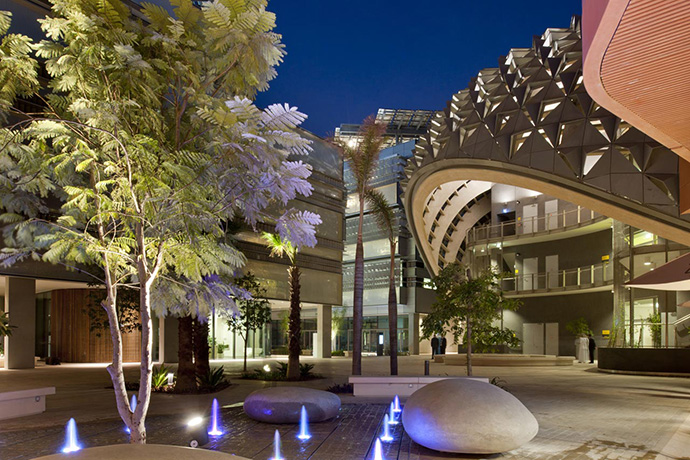Masdar, a city of the future which is being realized nowadays, will be situated in a desert near the UAE capital Abu Dhabi. The author of this ambitious project is a world-renowned architectural practice Foster + Partners. Planned to be completed in 2025, Masdar will be the most hi-tech city on the planet. It also will be the first zero-carbon city which means that it will run on renewable energy only.
To achieve this goal, not only advanced technologies were applied but also planning solutions. The architects were inspired by traditional Arab settlements which are, being compact and densely populated, characterized by relatively low energy consumption. At the same time, these settlements are socially diverse places where people live and work in the same environments. In Masdar, there won’t be separate functional zones too – almost all functions will be embedded in the heart of the community, so residents and commuters will find everything they need close at hand.
In order to facilitate the flow of cooling breezes through the city, the streets were oriented in the direction of prevailing winds – 38 degrees counter-clockwise of the north axis. The architects also arranged buildings closer together to provide more shading at the street level throughout the day. As a result, the sun and the sky will be almost unseen inside the city. However, this fact seems rather an advantage, taking into account that the weather in the region in very warm. At the same time, the sun will be the main source of energy – photovoltaic panels are planned to install on most roofs. To help them, there are also a 10 MW solar photovoltaic farm and 100 MW concentrating solar power station Shams 1 that has recently started working.
To make Masdar function efficiently, the citizens will have to lead a specific lifestyle and probably correct some their habits. For example, there will be no traditional transport in the city; it will be replaced by Personal Rapid Transit (PRT) – driverless electric public transport controlled by an advanced navigation system. Despite the fact that the distance to the nearest PRT station will not exceed 200 meters, such scheme undoubtedly encourage walking.
It is also supposed that the citizens will consume approximately half of the amount of water, compared to the UAE average for the cities of the same size. People will use highly efficient appliances and low-flow showers. Real-time monitoring systems and smart water meters will inform consumers of their consumption. There will also be high-efficiency irrigation and low-water use landscaping, particularly through the use of indigenous desert flora. In apartments, there will be separate waste chutes for different types of waste. All appropriate biowaste will be composted then, and the product will be used to enrich the landscaping.
Today, Masdar houses about one thousand people that work or study at the Masdar Institute. However, the first phase will be completed this year, and after the end of construction in 2025, about 40,000 people will live in Masdar and 50,000 people will commute to work and study.
PROJECT DATA:
Architecture: Foster + Partners
Appointment: 2007
Area: 6,000,000 m?
Client: Masdar-Abu Dhabi Future Energy Company
Quantity Surveyor: Cyril Sweet Limited
M+E Engineer: W.S.P Transsolar, ETA
Additional Consultants: Gustafson Porter, Ernst and Young, E.T.A., Transsolar, Flack + Kurtz, Systematica

